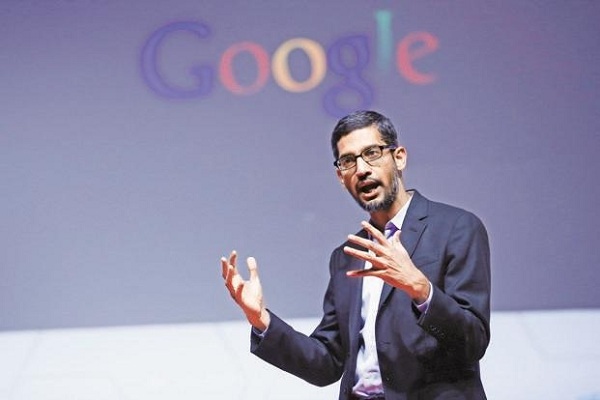
by admin | May 25, 2021 | Corporate Jobs, Employment
 Bengaluru : The back office services sector posted about $30 billion revenue in2016-17, with 12 lakh employees, said the Indian IT industry apex body Nasscom on Thursday.
Bengaluru : The back office services sector posted about $30 billion revenue in2016-17, with 12 lakh employees, said the Indian IT industry apex body Nasscom on Thursday.
“The Indian Business Process Management (BPM) or back office services sector remains the world’s largest base, with $30 billion (Rs.1,95,000 crore) revenue and 12-lakh employees in 2016-17,” Nasscom Chairman Raman Roy told reporters here.
Asserting that advanced technology solutions and intelligent automation would drive the sector’s growth, he said the BPM sector was projected to touch $50-55 billion by 2025 with a steady growth over the next eight years.
Overcoming the slower growth phase, the Indian BPM industry has 35 per cent share of global sourcing and 38 per cent in the employable graduate pool, with revenue growth of 1.7 times.
“Digital streams will account for 60-70 per cent of the BPM service providers’ revenue by 2025, overtaking traditional streams, with intelligent automation driving its growth,” said Roy on the margins of the 19th BPM Strategy Summit of the National Association of Software and Services Companies (Nasscom).
Noting that the BPM industry was growing in strength, embracing the change, he said hybrid growth of higher order thinking and digital assistance would drive dynamic shifts towards new geographies, verticals and markets.
“The shift towards digital strategy is witnessing adoption of robotic process automation, advanced analytics and digital assistance,” he added.
With the advent of new pricing models and increasing demand for unique skills in analytics, domain-knowledge and emerging technology, the BPM industry is aided by strategic acquisitions, partnerships and collaborations.
“These are interesting times for the BPM industry, with digital becoming the driving force behind the growth of the sector. With customer experience becoming mission critical for companies, they are investing in new technologies enabling AI, Automation and Big Data Analytics in a secured fashion,” said Nasscom BPM Council Chair Rohit Kapoor at the summit.
The BPM industry is creating impact in process improvements, helping lower cost to serve, higher return on investment, customers as partners to reduce risks and drive results.
To accelerate the pace of growth, the Council has decided to position India as the destination for global firms to deliver transformation value and the BPM sector as an industry of choice for aspiring professionals.
—IANS

by admin | May 25, 2021 | Opinions
 By Amit Kapoor,
By Amit Kapoor,
Infosys is yet again in the news for all the wrong reasons. The poster child of the Indian IT industry just cannot seem to stabilise its ship even after a decade of consistently losing market share under different leaders, mostly comprising of its co-founders. In fact, Vishal Sikka was the first non-founder CEO for the company and was the first one successful in bringing stability to the companys market performance vis-à-vis rivals like Tata Consultancy Services (TCS) since it had begun deteriorating almost a decade ago.
The real story in the Infosys saga, however, does not lie in the intricacies of the company’s boardroom battles but the larger malaise that it highlights within the Indian corporates as a whole.
First, the succession planning of Indian corporates seems to be a serious issue. While the concept of succession planning exists in India, bluechip corporates have been struggling to successfully put it into practice. Sikka’s abrupt exit puts the company in a state of disarray. The Indian system of succession planning within corporates differs largely from their global counterparts, which begin to hunt for a successor quite a few months in advance.
Second, there seems to a lack of clarity on the role that different stakeholders play in a company. Promoters in companies need to define their roles as executives, board members and shareholders. Problems like the one in Infosys arise when promoters overstep their roles and assume different responsibilities at different points of time. The founders at Infosys seem to be having a tough time letting go of their control over the company and often cross jurisdiction is the result. After N.R. Narayana Murthy stepped down as CEO in 2002, three co-founders succeeded him — mostly unsuccessfully in maintaining the company’s growth trajectory. Murthy’s vocal interference in the company’s workings and Nandan Nilekani’s return following Sikka’s exit points to an utter unwillingness of handing over control to an “outsider”. Founders assuming control anytime they feel uncomfortable with operations undermines decisive leadership and puts the stability of the company under threat.
Third, corporate governance seems to be quite problematic among Indian firms. The fact that the issue has arisen in a firm that made the concept popular in India is especially concerning. When the acquisition of Israeli solutions provider Panaya was questioned by Murthy, a shareholder in the company, it behoved the board to address the concerns to the satisfaction of its shareholders. Transparency is the key to ensuring the highest standards of corporate governance. In the board’s defence, they did call for an independent inquiry into the matter and found no wrongdoing. However, it fell short of releasing the complete reports of the investigation as demanded by Murthy.
All these factors — succession planning, clarity of roles and corporate governance — play a crucial role in determining the sustainability of large firms and if they become a ubiquitous problem, among Indian corporates, their survival might come under threat. There is also a much larger problem that springs out of the tendency of the old guard to not let go of their companies – the ability to innovate.
Infosys was slowly becoming irrelevant with back office processing and IT support work due to large scale automation. Rapid automation calls for a move into emerging sectors like Artificial Intelligence (AI) and robotics for IT firms and Infosys was losing ground here. Sikka attempted venturing into these disruptive sectors and the founders who were accustomed to making profits through labour arbitrage did not feel comfortable with such moves.
This is a typical problem with large firms. Innovation does not come easy to them. In most industries, innovators are usually “outsiders” in some sense. Either it comes from a new company whose founder has a non-traditional background or from existing companies through senior managers who are new and unfamiliar to the industry. Such sets of people are usually more able to identify new opportunities and are bolder in pursuing them as well. This is the biggest problem with Infosys and results in slow-paced innovation within the company, which is hurting the company itself in the long run. An innovation handicap will mark the company for its slow demise in an industry as fast paced as IT. On a larger scale, it also damages the country’s ability to innovate as a whole, which is quite worrying for its relevance on the world stage.
Therefore, the crisis in Infosys isn’t just limited to the company itself. The Indian corporate sector needs to take copious notes as it unfolds and learns what not to do in order to ensure its sustainability. Also, it must learn not to fall into the trap of sticking to old ideas at the cost of innovation.
(Amit Kapoor is chair, Institute for Competitiveness, India. The views expressed are personal. He can be contacted at amit.kapoor@competitiveness.in and tweets @kautiliya. Chirag Yadav, senior researcher, Institute for Competitiveness, India has contributed to the article)
—IANS

by admin | May 25, 2021 | Markets, Technology
 By Fakir Balaji
By Fakir Balaji
Bengaluru/New Delhi:(IANS) The Indian IT industry is upbeat over the appointment of Indian-born Sundarajan Pichai, 43, as chief executive of the world’s largest search engine Google Inc in the US.
Elated over the meteoric rise of Pichai in Google, who will succeed its co-founder Larry Page a decade after joining the Silicon Valley behemoth in 2004, a top industry executive said on Tuesday that the IIT graduate symbolized new India, representing talent, technology, innovation and managerial acumen.
“It is not a surprise that another Indian techie has made it to the top a year after Satya Nadella became Microsoft’s chief executive. They both with many others represent the best of talent, creativity and managerial ability to run global corporations,” Nasscom president R. Chandrashekhar told IANS.
In a sudden announcement at Palo Alto where Google is headquartered, Page said that former Chrome and Android head Pichai would be the new executive as he was moving out to head a new umbrella company Alphabet.
Google’s other co-founder Sergey Brin will be the president of Alphabet, floated to run its other subsidiaries such as Life Sciences and Calico.
Prime Minister Narendra Modi was the first to greet Pichai for heading one of the most valued technology firms in the world.
“Congratulations Sundar Pichai. My best wishes for the new role at Google,” Modi tweeted.
Modi is likely to meet Pichai during his visit to the Silicon Valley in September to address the Indian Diaspora, especially hundreds of Indian-born techies and entrepreneurs working in global IT firms and start-ups in the Bay area.
“We are planning to have an inter-active session between Modi and our Diaspora in the Silicon Valley where he will meet Pichai, Nadella and other Indian-born and Indian American honchos to seek their expertise in fast tracking the ‘Digital India’ and ‘Make in India’ programmes,” Chandrashekhar said.
Nadella also tweeted: “Congrats sundarpichai well deserved!”
Besides strengthening Indian and American tech partnership, elevation of Pichai and Nadella to top posts underscored the fact that India has become a storehouse of global talent in technology and management.
“Pichai, Nadella and scores of other Indians who went on to build IT products demonstrate the maturity of our IT industry, which has come of age to catch up with global peers and move up the value chain to innovation from software services and back office operations,” said Chandrashekhar.
Echoing the industry body’s view, former Infosys director and Manipal Global Education T.V. Mohandas Pai said Pichai’s rise to the top in Google was a testimony to the great global talent India had and the globalisation of Indian economy.
“With a more open economy, Indians are working at senior levels across global enterprises and are beginning to head global corporations, particularly in technology,” Pai told IANS here.
Representing the $150-billion Indian IT industry, the National Association of Software and Services Companies (Nasscom) plans to invite Pichai to India for building an ecosystem in the country to replicate its success in software services in products for serving domestic and global markets.
“It is a matter of pride to have many Indians like Pichai in top positions in the tech world, and it would be an honour to have their expertise in speeding up product development, innovation and creating new devices for global market,” Chandrashekhar added.
Lauding Pichai for becoming a chief executive of a global firm at a young age, former Infosys director and angel investor V. Balakrishnan said it was wonderful to see many Indians occupy the top posts in global corporations.
“Google is one of the most innovative organisations in the world, and Pichai is one of the most respected persons in the technology industry. His elevation to the chief executive post in Google validates once again the quality and depth of managerial talent India has,” Balakrishnan told IANS here.

 Bengaluru : The back office services sector posted about $30 billion revenue in2016-17, with 12 lakh employees, said the Indian IT industry apex body Nasscom on Thursday.
Bengaluru : The back office services sector posted about $30 billion revenue in2016-17, with 12 lakh employees, said the Indian IT industry apex body Nasscom on Thursday.

